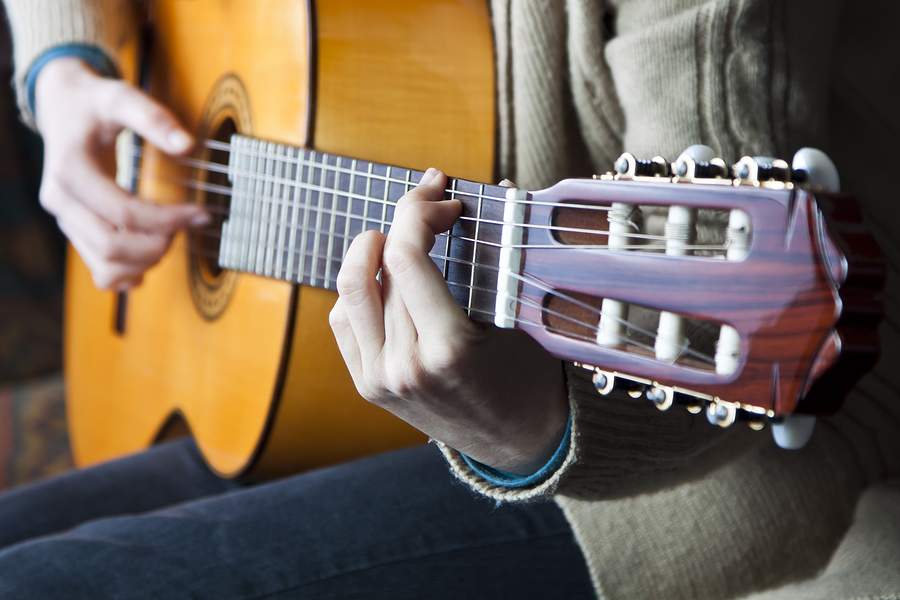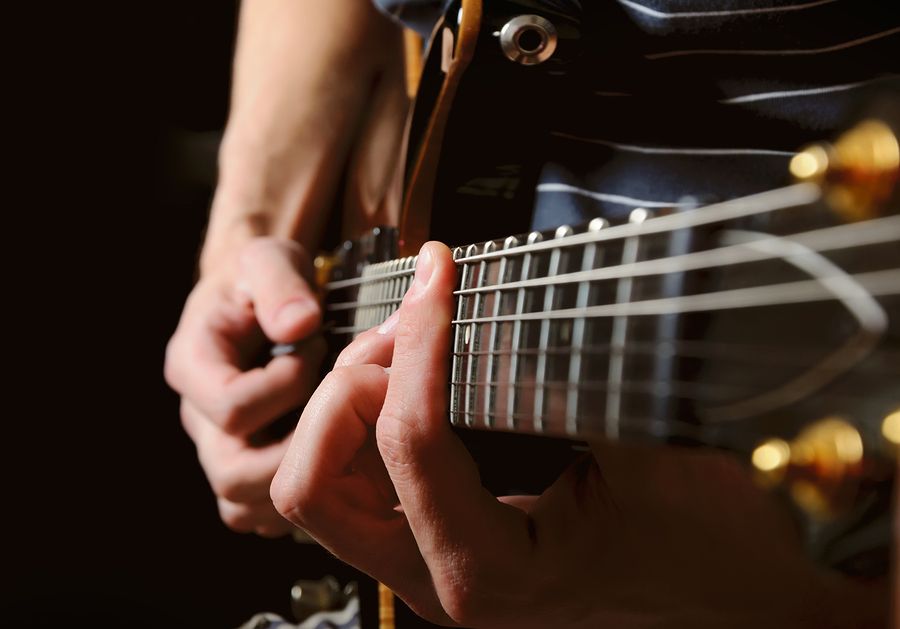
I first got briefly introduced with proper posture and good practice habits by Al Di Meola’s chords, scales and arpeggios book. For me he is just one of the coolest guitar dudes on the planet, so what he wrote in the book was a good place to start with.
Proper guitar posture is not something every guitar player is aware of or takes seriously.
That’s because improper posture and bad habits will not immediately result in injuries.
But over the long term guitar players can get back, shoulder, neck, elbow, arm and wrist pains, RSI (repetitive strain injuries), tendonitis, CTS (Carpal Tunnel Syndrome) and other nasty side effects.
This is certainly not every guitar player’s destiny, but it’s not out of the question either. But there’s good news! Proper posture can prevent a lot of these injuries and it makes guitar playing easier and more pleasant.
A good hand positioning is here also really important to learn to play effectively and properly. Every detail makes all the difference in the world.
Let’s take a closer look:
Continue Reading
 I must confess, the reason I bought an iPad in the first place is because I wanted to have access to jam tracks in the quickest way possible when sitting on my couch playing guitar, but without having to walk over to a computer, a CD player or anything like that. That’s just too much of a hassle.
I must confess, the reason I bought an iPad in the first place is because I wanted to have access to jam tracks in the quickest way possible when sitting on my couch playing guitar, but without having to walk over to a computer, a CD player or anything like that. That’s just too much of a hassle. We all procrastinate and so do I. Email and exercise are my weak spots and I find that improving certain guitar skills are very time consuming so I tend to procrastinate, but I have found some pretty exquisite ways to overcome that.
We all procrastinate and so do I. Email and exercise are my weak spots and I find that improving certain guitar skills are very time consuming so I tend to procrastinate, but I have found some pretty exquisite ways to overcome that.